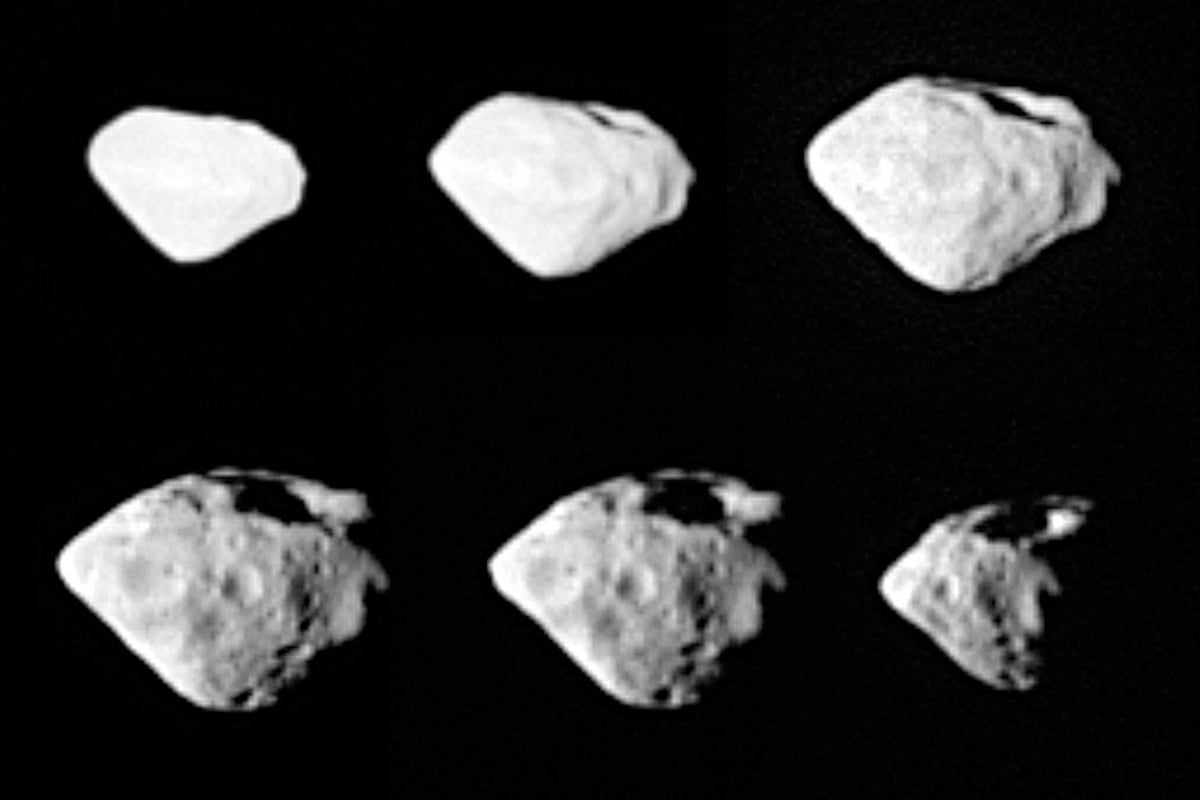[/caption]
ESA's Rosetta spacecraft successfully flew by the asteroid 2867 Steins, coming within 800 km (500 miles) and gathering images and data on the irregularly shaped rock in space. "Steins looks like a diamond in the sky," said Uwe Keller, Principal Investigator for the OSIRIS imaging system on board the spacecraft. Watch a movie of the flyby
here.
Visible in the images are several small craters on the asteroid, and two huge ones. While the wide-angle camera worked perfectly during the flyby, the narrower and higher resolution camera switched itself off and into safe mode a few minutes before closest approach, but switched back on after a few hours. "The software switched off automatically," said Gerhard Schwehm, Rosetta mission manager. "The camera has some software limits and we'll analyze why this happened later."
Rita Schulz, Rosetta Project Scientist, said, "In the images is a chain of impact craters, which must have formed from recurring impact as the asteroid rotated. The impact may have been caused by a meteoroid stream, or fragments from a shattered small body."
The chain is composed of about 7 craters. To determine the age of the asteroid, a count of the craters on the asteroid’s surface has been started (the more the number of craters, the older the asteroid). So far, 23 craters have been spotted. [caption id="attachment_17810" align="alignnone" width="400" caption="Steins in 3 D. Credit: ESA"]
[/caption]
From the images, scientists will try and understand why the asteroid is unusually bright, and how fine grains of the surface regolith are. This will tell them more about how the asteroid formed. Images from the narrow angle camera are yet to be retrieved, and will help add to the knowledge of the surface composition and mineralogy.
"It looks like a typical asteroid, but it is really fascinating how much we can learn from just the images," said Schwehm. "This is our first science highlight; we certainly have a lot of promising science ahead of us. I’m already looking forward to encountering our next diamond in the sky, the much bigger Lutetia." Rosetta will meet up with asteroid (21) Lutetia on June 10, 2010.
What's next for Rosetta? It will reach the maximum distance from the Sun on its current orbit on the 17th of December (2.26 AU) to head back to Earth for the next and last swing-by on the Nov. 13, 2009. After it flies by Lutetia, its final destination is going into orbit around Comet 67P/Churyumov-Gerasimenko in 2014.
Source:
ESA
 Universe Today
Universe Today
